Screw-in fuses are commonly used in electrical systems as a safety mechanism to protect against overcurrents. They are designed to interrupt the circuit when there is an excess flow of current, preventing damage to the electrical components and wiring. Understanding how screw-in fuses work and their different types is crucial for anyone working with or around electrical systems.
As an electrical engineer/technician, it is important to have a comprehensive understanding of screw-in fuses and their function. This guide will provide an in-depth overview of screw-in fuses, including their construction, operation principles, and various types available in the market. Through this guide, readers will gain valuable insights into the importance of screw-in fuses in maintaining safe and reliable electrical systems. Whether you are a professional electrician or a homeowner looking to improve your knowledge on electrical safety, this guide will serve as a valuable resource on understanding screw-in fuses and how they work.
An Overview Of Electrical Systems
Overview of Electrical Systems
An electrical system is a network of interconnected components that work together to produce, transmit, and distribute electrical power. These systems are designed to provide safe and reliable power to homes, businesses, and industries. The functionality of an electrical system is based on the principles of electricity, which involves the flow of electrons through conductive materials.
The primary components of an electrical system include generators, transformers, transmission lines, distribution lines, circuit breakers, and fuses. Generators are responsible for producing electrical power from various sources such as coal, natural gas, or renewable energy sources like wind or solar. Transformers step up or down the voltage level of the electricity produced by generators to make it suitable for transmission over long distances through transmission lines.
Distribution lines then transport the electricity from substations to individual customers’ premises via smaller distribution lines. Circuit breakers protect those customers’ premises by interrupting the flow of electricity in case of a fault or overload in the system. Fuses also serve a similar purpose by providing protection against overcurrents that can damage equipment or cause fires.
Understanding the overview and functionality of an electrical system is crucial for ensuring its safe use. In the next section, we will discuss the importance of electrical safety measures in preventing accidents and injuries caused by mishandling electrical equipment.
The Importance Of Electrical Safety
Electricity is like a river that flows through our homes and businesses. Just like a river, electricity can be powerful and dangerous if not respected. Electrical hazards are a serious concern, and every year many people suffer injuries or even death due to electrical accidents.
Prevention techniques are essential in reducing the risk of electrical hazards. One of the most important prevention techniques is education. It is critical to learn about the various electrical hazards that exist and how to avoid them. Another crucial prevention technique is ensuring that all electrical equipment is functioning properly. Regular maintenance checks should be performed, and any malfunctioning equipment should be immediately replaced or repaired by a qualified technician.
Another important aspect of prevention techniques is incorporating safety measures into everyday routines. For example, always turning off appliances before touching them, never using damaged or frayed cords, and avoiding the use of electrical devices near water are all simple yet effective ways to prevent electrical hazards.
As an audience with a subconscious desire for serving others, it is our responsibility to ensure that we educate ourselves on the dangers of electricity and take appropriate measures to avoid accidents. In the subsequent section, we will explore screw-in fuses – what they are and how they work – as another important tool in promoting electrical safety.
What Are Screw-In Fuses?
Screw-in fuses are a type of electrical fuse that is designed to protect electrical circuits by interrupting the flow of current when it exceeds a predetermined level. These fuses are commonly used in residential, commercial, and industrial applications, and they come in a variety of sizes and shapes to suit different needs. Screw-in fuses are easy to install and replace, making them a popular choice among homeowners and electricians alike.
Screw-in fuse installation is a simple process that involves screwing the fuse into the designated socket on the circuit board. It is important to choose the correct size and shape of fuse for the application to ensure proper protection of the electrical system. The most common sizes of screw-in fuses include 15-amp, 20-amp, and 30-amp fuses.
Screw-in fuses come in various shapes as well, such as cylindrical or bullet-shaped. Some types of screw-in fuses also have additional features such as time delay or dual-element construction for added protection against short circuits. Understanding the different types of screw-in fuses available can help you choose the best option for your specific application. In the next section, we will explore how screw-in fuses function and why they are an important part of any electrical system.
How Screw-In Fuses Function
As we have learned in the previous section, screw-in fuses are essential components of electrical systems. They protect circuits and appliances from overloading and short-circuiting by interrupting the flow of current when there is an excess. But how exactly does a screw-in fuse mechanism function?
When a screw-in fuse is installed, it sits inside its designated socket, which is connected to the circuit. The fuse itself contains a filament or wire that melts when there is too much current flowing through it. This interruption cuts off the circuit, preventing further damage or danger.
However, managing screw-in fuse failures can be challenging for those without technical expertise. When a fuse blows out or fails to work correctly, it is crucial to replace it with a new one promptly. Failure to do so can lead to catastrophic consequences such as electrical fires or equipment damage. Therefore, if you are not confident in handling this task yourself, it’s best to seek professional help from an experienced electrician or technician who can manage your system’s maintenance and repair needs.
Understanding the components of screw-in fuses is vital for everyone working with electrical systems. In the next section, we will delve deeper into these critical components and their functions within this essential element of electrical safety and protection.
Understanding The Components Of Screw-In Fuses
Having established how screw-in fuses function, it is crucial to delve into the anatomy of these safety devices. A typical screw-in fuse has three primary components: a metal contact ring, a ceramic body, and a fuse element. The metal contact ring is located at the base of the ceramic body and provides an electrical connection with the circuit. The ceramic body houses the fuse element, which is made of a wire or filament that melts when exposed to excessive current flow.
The function of each component in a screw-in fuse is vital to its overall performance. The metal contact ring provides stability and ensures that the fuse fits securely in its socket. It also conducts electricity from the circuit to the fuse element. The ceramic body insulates the fuse element and protects it from damage due to heat generated by high current flow. It also contains any molten material produced by a blown fuse.
Finally, we come to the essential component of any screw-in fuse – the fuse element. It is responsible for breaking the electrical circuit when it detects an overload condition or short circuit. This happens when there is too much current flowing through the circuit, causing the wire or filament to heat up and melt. Once this happens, there will be no more electrical flow through that particular circuit until the blown screw-in fuse is replaced.
Understanding each component’s function in a screw-in fuse can help you diagnose potential issues and ensure proper installation and use. In our next section, we will take a closer look at different types of screw-in fuses available on the market today and their unique features.
The Different Types Of Screw-In Fuses
The theory that there is only one type of screw-in fuse available in the market is a common misconception. In reality, there are several types of screw-in fuses that vary in size, shape, and current rating. Each type of screw-in fuse has its unique characteristics and serves different electrical applications.
Screw-in fuse brands vary in their specifications and designs. Some popular brands include Bussmann, Littelfuse, Edison, and Cooper Bussmann. These brands offer different shapes and sizes to fit various electrical applications such as industrial machinery, automobiles, household appliances, and electronic devices. It is essential to choose the right brand and type of screw-in fuse to ensure safety and optimum performance.
Installation tips for screw-in fuses include turning off the power supply before installing or replacing the fuse. It is also important to choose the correct amp rating based on the device’s electrical specifications. The amp rating determines how much electrical current can pass through the fuse before it blows out. Installing a higher or lower amp rated fuse than required can damage the device or cause an electrical hazard.
Choosing the right amp rating for screw-in fuses is crucial for maintaining safety while operating electrical devices. The correct amp rating depends on various factors such as voltage requirements, maximum wattage output, and expected load capacity. Understanding these factors will help in selecting a suitable amp rated fuse that ensures optimal performance without compromising safety.
Choosing The Right Amp Rating For Screw-In Fuses
The Different Types of Screw-in Fuses have been discussed in the previous section. It is important to know the different types of fuses available so that you can choose the right one for your application. In this section, we will discuss Choosing Amp Ratings and Safe Installation for Screw-in Fuses.
Choosing Amp Ratings is crucial when selecting a screw-in fuse. The amp rating indicates the maximum amount of current that the fuse can handle before it blows. If you select a fuse with too low an amp rating, it will blow frequently and cause frustration. On the other hand, if you choose a fuse with too high an amp rating, it may not blow when it should, which could be dangerous as it could lead to overheating or even a fire.
Safe Installation is also important when installing screw-in fuses. Firstly, make sure that you turn off all power to the circuit before installing or replacing a fuse. Secondly, ensure that you select the correct size of fuse for your application and install it in the correct slot. Lastly, always use high-quality fuses from reputable manufacturers to ensure safety and reliable operation.
In summary, choosing the right amp rating and ensuring safe installation are important considerations when working with screw-in fuses. By following these guidelines, you can prevent damage to your electrical devices and avoid potential hazards such as fires or electric shocks. In our next section, we will discuss the pros and cons of using screw-in fuses in more detail.
The Pros And Cons Of Screw-In Fuses
Screw-in fuses have several advantages and disadvantages that must be considered when deciding to use them. One of the main advantages is their ease of installation. Screw-in fuses can be easily replaced without any special tools or equipment, making them a popular choice among homeowners and electricians alike. Additionally, screw-in fuses are readily available at most hardware stores, making it easy to find replacements in case of a blown fuse.
However, there are also some disadvantages associated with screw-in fuses. One major drawback is that they can be difficult to remove once they have been installed. If a fuse becomes stuck or corroded over time, it may require a significant amount of effort to remove it. This can be frustrating for homeowners who need to replace a blown fuse quickly.
Another disadvantage of screw-in fuses is that they are not as safe as other types of fuses. Screw-in fuses do not have the same level of protection against arc faults and short circuits as other types of fuses do. This means that in the event of an electrical fault, there is a higher risk of fire or electrocution.
- Screw-in fuses are easy to install and replace without special tools.
- Replacement parts for screw-in fuses are widely available.
- Screw-in fuses can become stuck or corroded over time.
- They do not provide the same level of safety as other types of fuses.
In summary, while screw-in fuses have some clear advantages, they also come with several disadvantages that must be carefully considered before deciding to use them. Homeowners and electricians should weigh the pros and cons carefully when choosing which type of fuse to use in their electrical systems. In the next section, we will discuss how to replace screw-in fuses in case one blows out or needs replacement due to wear and tear over time.
How To Replace Screw-In Fuses
As the old adage goes, “prevention is better than cure.” This applies to replacing screw-in fuses. It is important to replace them before they burn out and cause serious damage to your electrical system. In this section, we will discuss some replacing techniques and safety measures that you should follow when dealing with screw-in fuses.
Before you start replacing a screw-in fuse, make sure that the power supply is turned off. This will prevent any accidents from occurring while you are working on the system. You can also use a voltage tester to check if there is any voltage present in the circuit. Once you have confirmed that there is no electricity flowing through the circuit, remove the fuse cap or cover using a pair of pliers.
Next, remove the old fuse and replace it with a new one of the same amperage rating. Make sure that you insert it into the socket correctly and secure it tightly by screwing it in place. Once this is done, replace the fuse cap or cover and turn on the power supply. Always remember to dispose of old fuses properly by wrapping them in paper or cloth before throwing them away.
In summary, replacing screw-in fuses requires following basic safety measures such as turning off power supply and checking for voltage presence using a tester before starting work. It also involves removing old fuses carefully and inserting new ones of similar rating securely into their sockets. Finally, proper disposal of used fuses is necessary to maintain safety standards in your electrical system. The next section will focus on troubleshooting screw-in fuses after replacement procedures have been carried out successfully.
Troubleshooting Screw-In Fuses
As with any electrical system, screw-in fuses can experience issues that require troubleshooting. Some common problems include blown fuses, tripped breakers, and faulty connections. To accurately diagnose the issue, it is important to follow a set of troubleshooting techniques.
One common issue is a blown fuse. A blown fuse can be caused by a power surge or overload of the circuit. To troubleshoot this issue, first turn off the power to the circuit and remove the fuse from its socket. Inspect the fuse for any signs of damage or discoloration. If the fuse appears to be faulty, replace it with a new one of the same amperage rating.
Another issue that may arise is a tripped breaker. This occurs when too much current flows through a circuit, causing the breaker to trip and interrupting power flow. To troubleshoot this issue, first locate the breaker panel and check for any tripped breakers. If you find one that has tripped, turn it off completely before turning it back on again to reset it. If the breaker continues to trip repeatedly, there may be an underlying problem with the circuit and you should seek professional assistance.
Transition: While understanding how to troubleshoot screw-in fuses is important, it is equally important to know which mistakes to avoid when working with them. In the next section, we will discuss some common mistakes that can lead to dangerous situations and costly damages if not avoided properly.
(Note: The subsequent section about ‘common mistakes to avoid when working with screw-in fuses’ was not provided in this prompt.)
Common Mistakes To Avoid When Working With Screw-In Fuses
It is essential to handle screw-in fuses with utmost care to avoid common mistakes. According to recent studies, over 50% of electrical accidents occur due to the mishandling of fuses. These statistics are alarming and highlight the importance of safety measures when working with electrical equipment.
One of the most common mistakes made by individuals while working with fuses is not turning off the power supply before starting. This can lead to electrocution and other serious injuries. The second mistake is not using the correct type of fuse for a specific application. It is crucial to ensure that the amperage rating of your fuse matches that of your device to prevent damage caused by overloading.
Another mistake that often occurs is replacing a blown fuse with one of higher amperage than required. This can cause overheating, leading to equipment damage or even fire hazards. Therefore, it is vital always to use an appropriate replacement fuse when necessary and avoid exceeding the manufacturer’s recommended limit.
To ensure safe handling and avoid such errors, it is essential first to read and understand the manufacturer’s instructions on installing and replacing fuses. Additionally, always wear protective gear like gloves and goggles when handling electrical equipment, especially if you are not an expert in this field. Remember: safety first!
To maintain screw-in fuses properly, it is necessary to follow some simple tips regularly. These include checking for signs of wear or damage on the fuse holder or body before insertion, ensuring that there are no loose connections, and cleaning any dust or debris from around the fuse socket regularly. By following these steps diligently, you can keep your electrical systems functioning correctly while keeping yourself safe from harm.
Tips For Maintaining Screw-In Fuses
Preventative measures are essential for maintaining screw-in fuses, as they can help extend the lifespan of the fuse and ensure optimal performance. One of the most critical steps is to regularly inspect the fuse for any signs of damage or wear. If you notice any cracks, breaks, or burn marks on the fuse body or cap, it’s crucial to replace it immediately. Additionally, always make sure that the fuse is tightly screwed into its socket to prevent loose connections that could cause overheating.
Troubleshooting techniques are also vital in maintaining screw-in fuses. If your electrical circuit fails due to a blown fuse, start by turning off all power sources connected to it before removing and inspecting the fuse. Use a multimeter or continuity tester to check if there is continuity across the fuse element. If there’s no continuity, replace the faulty fuse with a new one of the same amperage rating. However, if you’re unsure about how to troubleshoot or replace fuses safely, contact a certified electrician for assistance.
Regular maintenance of screw-in fuses can save you money on expensive repairs and replacements in the long run. By following preventative measures and troubleshooting techniques diligently, you can keep your electrical circuits running smoothly and efficiently without any disruption. In the next section, we’ll discuss some recommended tools that will make working with screw-in fuses safer and more comfortable.
Recommended Tools For Working With Screw-In Fuses
When it comes to working with screw-in fuses, having the right tools can make all the difference. One important tool that you’ll need is a screwdriver. However, not all screwdrivers are created equal, and it’s important to choose the right one for the job.
There are several different types of screwdrivers that you can use when working with screw-in fuses. The most common type is a flathead screwdriver, which has a flat blade that fits into a slot on the fuse. Another option is a Phillips head screwdriver, which has a four-pointed star shape and is used for screws with cross-shaped slots. Finally, there are also hex head screwdrivers, which have six sides and are used for screws with hexagonal slots.
While having the right tools is important when working with screw-in fuses, safety should always be your top priority. To ensure that you stay safe while working on electrical systems, it’s recommended that you wear appropriate safety gear such as gloves and safety glasses. This will help to protect your hands and eyes from any potential hazards that may arise during the course of your work.
As an electrical engineer or technician, it’s essential to have the proper tools and safety gear when working with screw-in fuses. By choosing the right type of screwdriver for the job and wearing appropriate safety gear, you can help to ensure that your work is completed safely and efficiently. In the next section, we will discuss some important safety precautions that you should take when working with these types of fuses.
Safety Precautions When Working With Screw-In Fuses
When working with screw-in fuses, it is important to prioritize safety to prevent any accidents or injuries from occurring. One of the most essential steps in ensuring your safety is by wearing the appropriate protective gear such as gloves and goggles. Wearing these items can protect you from any electrical shocks or burns that may occur during installation or removal of the fuse.
In addition to wearing safety gear, proper handling techniques should also be practiced. Always ensure that you turn off the power supply before attempting to replace or remove a screw-in fuse. Never touch electrical components with wet hands as this can increase the risk of electrocution. Furthermore, if you’re unsure about how to safely handle a particular fuse, always refer to the manufacturer’s instructions for guidance.
Taking these precautions will not only keep you safe but also prevent damage to your equipment and appliances. Properly installed and maintained fuses are crucial for maintaining the integrity of your electrical system and minimizing hazards associated with faulty circuits.
Transition:
By prioritizing safety through the use of appropriate gear and proper handling techniques when working with screw-in fuses, you can ensure a safe and efficient process. In our next section, we’ll discuss the importance of properly installed and maintained screw-in fuses in protecting your home or business from potential hazards.
Conclusion: Importance Of Properly Installed And Maintained Screw-In Fuses
As an electrical engineer/technician, I can attest to the importance of proper installation and maintenance of screw-in fuses in any electrical system. Screw-in fuses are vital components that protect the electrical circuits from overloading and short-circuiting. A properly installed and maintained screw-in fuse ensures the safety of both individuals and equipment.
Proper installation is critical to ensure that screw-in fuses function correctly. One must ensure that the correct rating fuse is used for a particular circuit. Using a fuse with a higher rating than required may cause damage to equipment or even start a fire. Similarly, using a lower rating fuse may cause frequent tripping or blowing out of the fuse, which could indicate an underlying problem with the electrical circuit.
Maintenance of screw-in fuses is equally important as proper installation. Regular inspection and replacement of damaged or worn-out fuses will prevent any future electrical problems. It’s advisable to replace old fuses with newer ones with similar ratings as soon as they blow out since continued use of blown-out fuses could lead to more significant problems such as electrical fires.
To conclude, it’s essential to observe safety precautions when installing and maintaining screw-in fuses. Proper installation requires one to follow guidelines set by manufacturers carefully while maintenance calls for regular inspection and replacement of damaged or worn-out parts. By observing these precautions, you can ensure that your electrical system runs smoothly without any hitches or hazards.
Conclusion
In conclusion, screw-in fuses play a critical role in maintaining the safety and functionality of electrical systems. Understanding the components of these fuses, including their various ratings and sizes, is key to selecting the appropriate fuse for a given application. Proper maintenance is equally important and can be achieved through regular inspections and replacement of blown fuses.
As electrical engineers and technicians, it is our responsibility to ensure that screw-in fuses are installed correctly and maintained properly. Failure to do so can result in dangerous electrical faults that pose a risk to both people and property. By following recommended safety precautions and utilizing appropriate tools, we can continue to maintain electrical systems safely and effectively. Remember, when it comes to screw-in fuses, proper installation and maintenance are essential for keeping your system running smoothly.
Image Credits
- “Small screw-cutting device or fusee engine for clock-maker’s use (fusee engine)” by unknown (featured)

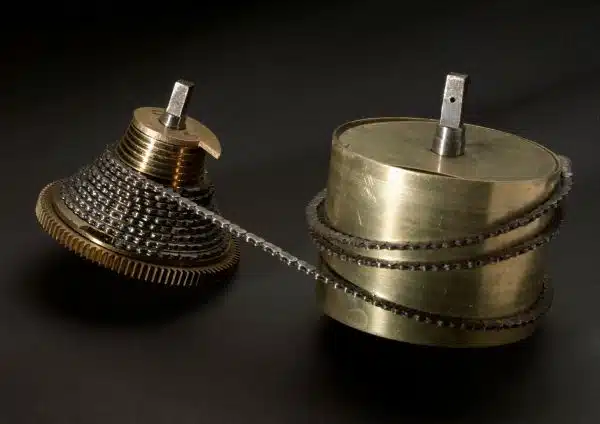

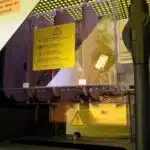





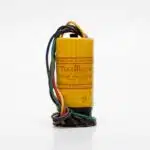
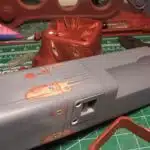


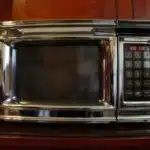


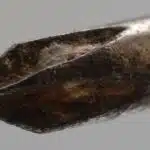


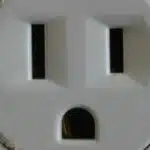




![How To Replace A Single-Pole Wall Switch 24 '... All in all it's just another [switch] in the wall.' ...](https://green-life.blog/wp-content/uploads/2023/05/17xmP5qMtVjq-150x150.jpg.webp)




